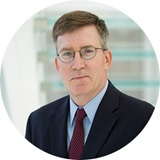Pew Analysis Shows Many States Looking to Increase Opportunities for Retirement Savings
More than 30 million full-time private sector employees lack access to workplace retirement plans
WASHINGTON—At least half of state governments in the United States are exploring or implementing programs to provide retirement savings options for private sector workers who do not have retirement plans through their employers, according to a report released today by The Pew Charitable Trusts. These state efforts—which are intended to increase savings during employees’ working years and reduce poverty among retirees—often require policymakers to balance multiple and sometimes conflicting priorities, the report found.
No major federal legislation to increase retirement savings has passed since the Pension Protection Act of 2006, so some state policymakers are looking for opportunities to fill the gap. Many states are considering what are essentially state-backed individual retirement accounts that build savings through regular deductions from workers’ paychecks. Illinois, Massachusetts, Oregon, and Washington have enacted such programs.
The report, “How States Are Working to Address the Retirement Savings Challenge: An Analysis of State-Sponsored Initiatives to Help Private Sector Workers Save,” examines efforts in 25 states. The research finds that:
- The vast majority of workers would participate in a workplace retirement savings plan if given a chance. As a result, many state proposals require that employers of a certain size enroll all workers, though these employees can opt out. But small-business owners express concerns that mandating automatic enrollment could be an administrative burden, which could reduce the appeal of these proposals.
- States must carefully consider where to set the initial percentage of employee pay that will go into the accounts—known as the default contribution rate—because workers typically do not opt out of automatic enrollment or adjust this default rate once they are enrolled. Too low a rate could encourage employee participation but result in little savings, forcing the state to administer a large number of small account balances. Too high a rate could lead to higher balances but could also cause some workers to avoid taking part altogether.
- States must define employers’ role in communicating plan specifics. Many proposed laws seek to limit businesses’ responsibilities for implementation; however, unless a state makes a major effort to inform workers and employers about details in such cases, some targeted workers may opt out. Employers may have to engage in ongoing communications with workers about the program—and bear the economic and lost-time costs—if the state does not perform these outreach functions effectively.
- States face challenges in generating and protecting workers’ savings over the long run. Low-risk investments make losses less likely but also increase the chances that accounts won’t grow enough to meet retirees’ needs. Some states have looked at ways to guarantee certain rates of return, but that approach also brings possible risks and costs to the state.
“Many states are considering new options for increasing retirement savings, and early indications are that it’s feasible for them to take on this challenge,” said John Scott, director of Pew’s retirement savings project. “Interested policymakers must explore ways to maximize program effectiveness, minimize administrative and financial costs for employers, and manage states’ legal and financial risks. But these priorities can conflict and require consideration of difficult trade-offs, making the task of crafting proposals tougher.”
Pew’s analysis identifies and examines the approaches that states are taking and looks at the specific choices facing policymakers, such as costs; employers’ participation, responsibilities, and liabilities; and rules for employees’ enrollment, contributions, and withdrawals.
Previous research by Pew and others found that most Americans are not saving enough for their retirement years. According to multiple sources, more than 30 million full-time and 75 percent of part-time or seasonal employees do not have a retirement savings plan through their employer, and less than 10 percent of all workers contribute to a plan outside of work. Click here to download the full report.
The Pew Charitable Trusts is driven by the power of knowledge to solve today’s most challenging problems. Learn more at www.pewtrusts.org.


How States Are Working to Address The Retirement Savings Challenge
An analysis of state-sponsored initiatives to help private sector workers save


America’s Overdose Crisis
Sign up for our five-email course explaining the overdose crisis in America, the state of treatment access, and ways to improve care
Sign up









